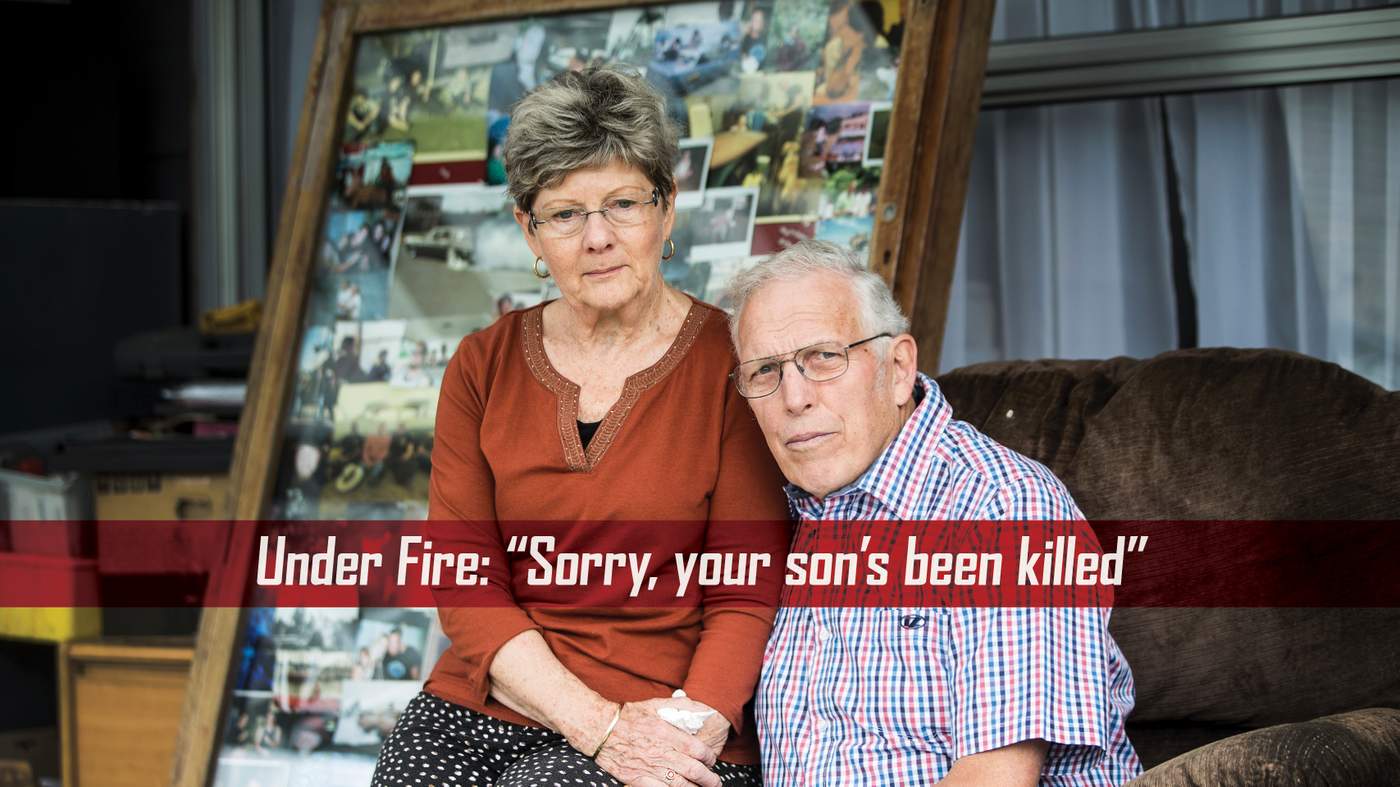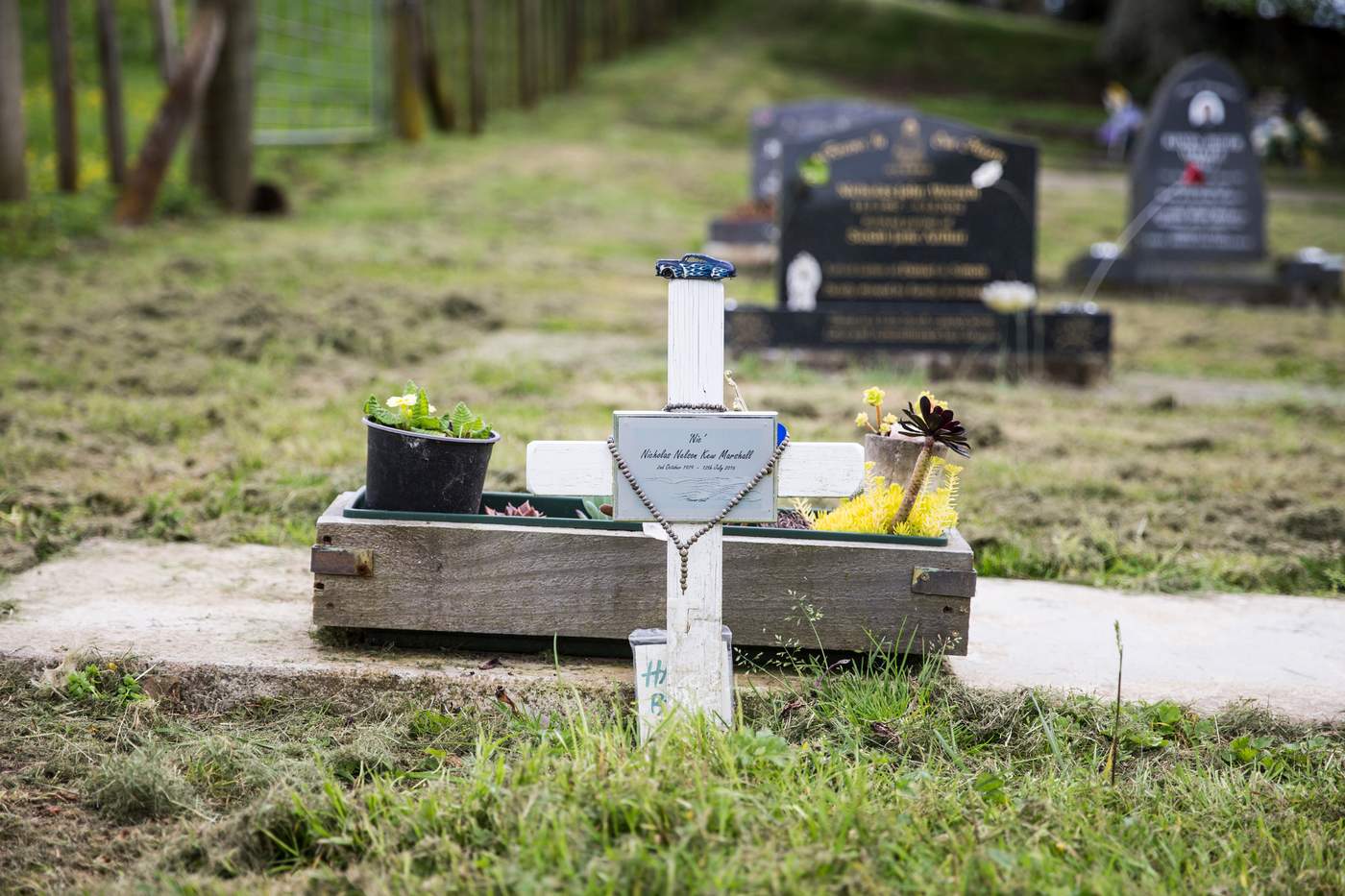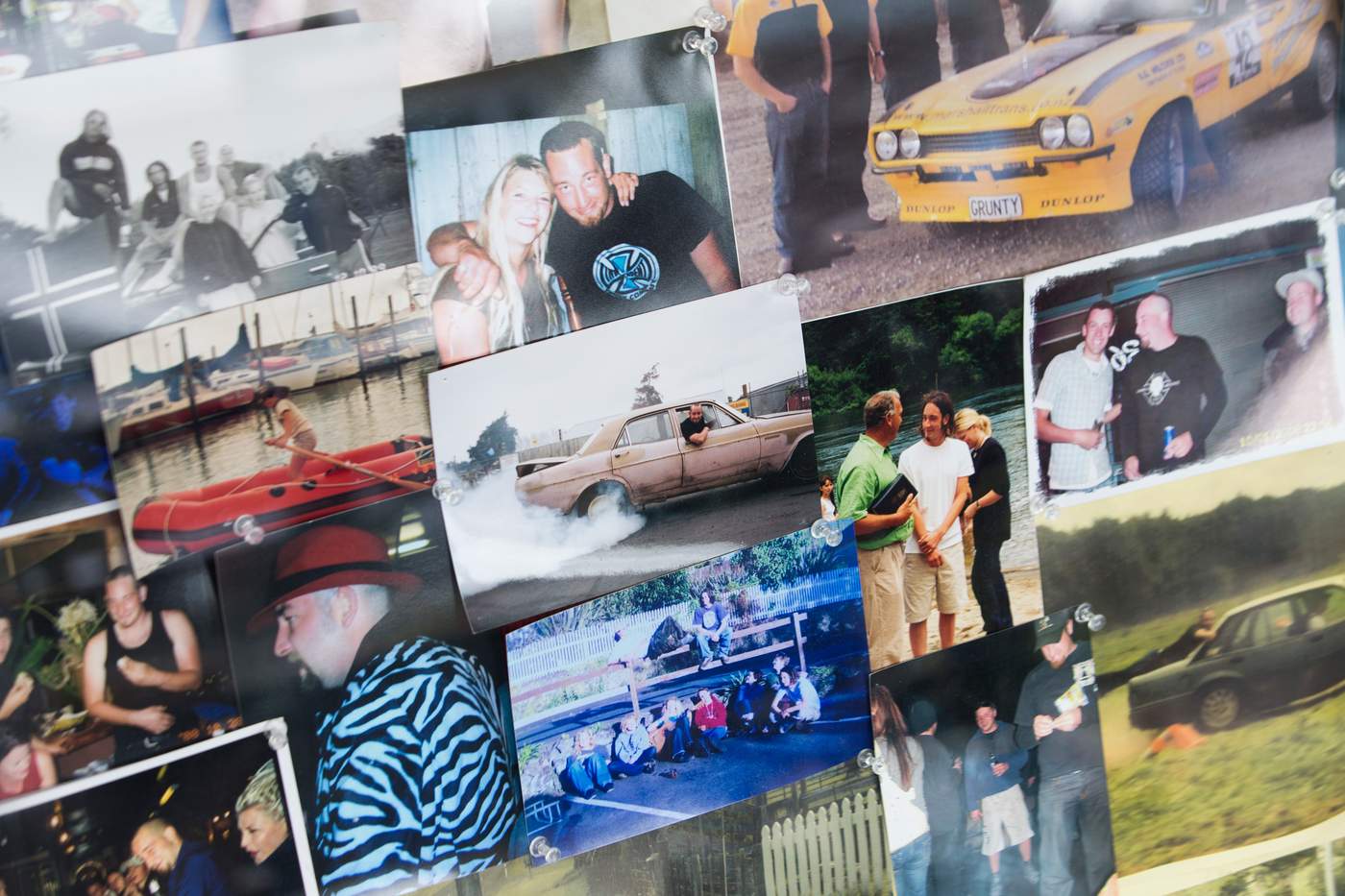
The family of a Hamilton man shot dead by the Armed Offenders Squad says police should wear cameras to show the truth of what happened in such incidents. Phillipa Yalden reports.
Margaret Marshall will never forget the gut wrenching feeling when a police officer uttered the words no mother wants to hear: "I'm sorry your son's been killed."
The Hamilton retiree had been preparing dinner for herself and husband Nelson at the couple's two-storey home on the outskirts of Hamilton on a wintry evening last July when the phone rang.
It was her sister, saying she'd heard about a shooting on Grasslands Place - an industrial cul-de-sac in Frankton.
Her heart sank, knowing that’s where her only son Nicholas Marshall lived with his partner Kendyl Eadie in a family-owned warehouse opposite their former business Marshall Transmissions.
"I got in my car and went down and there were police everywhere."
As Margaret arrived at the police cordon amid a haze of flashing lights, she was stopped.
"I said ‘that's my son in there’. They asked his name and I said, ‘Marshall’.
"She went away, came back, went away and came back, and said, ‘I'm really sorry your son's been killed’ - that was it."
Marshall was shot five times by Armed Offenders Squad officers after he pointed a shotgun at them when they raided the warehouse on suspicion he was supplying methamphetamine and manufacturing firearms.
The plan was to secure the warehouse using the AOS, then detectives would do a search and interview Marshall and anyone else.
But inside the cluttered warehouse, amid hoisted cars, piled-up tyres and auto parts, eight shots were fired - five hit the 36-year-old car nut.
"We have so many unanswered questions as to how the warrant was conducted," his sister Madelyn Stanton says.
"Nic's shooting was justified based on the balance of probabilities - body cameras on police would remove all doubt to what happened that night and give us closure as a family."
Police say they are monitoring the use of cameras by other agencies but have no plans for their immediate introduction.
The Independent Police Conduct Authority (IPCA) found the shooting was justified as the officers were faced with a "very real risk of death or serious bodily harm" when Marshall pointed a firearm at them and squeezed the trigger.

According to the IPCA report, police arrived at the warehouse at 6.25pm and used a loud hailer to announce themselves.
AOS officers in full kit pushed through the mesh internal door into a lit-up confined workshop where Marshall walked out of an office about four metres away.
He was told to get on the ground but ran to the back of the warehouse and picked up a pump action shotgun, pointed it at police and pulled the trigger, but it failed to fire.
Marshall then pointed the shotgun towards the ceiling and racked the chamber, causing a shell to pop out.
An officer yelled at Marshall to drop his gun but the report states Marshall tried to load another round. Believing Marshall was going to shoot him, the officer fired five shots from his M4 rifle.
At the same time another officer, armed with a pistol, saw Marshall holding the shotgun at his hip, and believing he was going to shoot, fired three times.
First aid was given but Marshall died at the scene.
More than a year after the shooting, the Marshalls have misgivings about the IPCA report and how the search warrant was carried out.
They don't dispute that Nic pulled a gun on officers but say he likely thought it was Mongrel Mob members breaking in, says Nelson Marshall.
It wouldn't be the first time gang members had confronted Nic at the warehouse - they'd come knocking in the middle of the night a month earlier.
"I don't dispute that Nic picked up a gun, because I know there was a shotgun in the shop, I had seen it leaning against a wall," Nelson says.
"But I do dispute the need for armed officers to come in at 6 at night, an hour after he shut the workshop."
They doubt whether Nic would have heard the loudhailer as he typically watched TV and listened to music, and sound was muffled by the workshop in front.
They also question why police chose to go in under darkness when they’d visited the premises during the day in the past.
"At 6.30pm on a July night, it was pitch black - all he would have seen was torches in his eyes," his sister says.
"Cameras would alleviate all this, take out all the ifs, and buts and whys."
Marshall was deemed "low risk" by police due to his lack of criminal convictions but they were concerned about associates, including gang leaders, seen coming and going from the warehouse.
"So why did they go in with six officers with loaded guns. We just don't understand why they didn't do it in the daytime,” Stanton says.
Nic had a heart of gold, his family say, and it would have been out of character for him to have wanted to harm police officers.
Unable to have their own children, the Marshalls adopted Nic after losing one of their first adopted children at the age of two.
Nic attended top schools in Hamilton, becoming a "well-educated and an intelligent boy".
Nelson Marshall amongst items from his sons workshop where Nicholas Marshall was shot dead (CHRISTEL YARDLEY/STUFF)

At 18, he spent a year studying at Christian Bible College in Cambridge and played in a band at the Parachute music festival.
"That meant everything to him. He was very passionate about his faith and beliefs,” Margaret Marshall says.
Like his A-grade mechanic father, Nic had a love of cars, won burnout competitions and competed with his dad in the London to Sydney Marathon Rally in 2004.
"He was quite clever, good at making, modifying and fixing things,” Margaret says.
In 2009, he took over Marshall Transmissions and ran it well for about four years.
But major changes in the industry put mounting pressure on the business and it went into liquidation, forcing the Marshalls to sell up.
"That's when he got into meth and he dropped like a rocket,” Nelson says.
"The stress and strain of selling the business, he had ups and downs when he was on the P, I think he thought he was to blame.”
He sold his house in Frankton and moved into the warehouse where he began fixing cars for the Mongrel Mob and bikes for the Outcasts MC.
"We worked our way through that and we thought we'd got him off it," Nelson says.
"He was back to his old self, he had money in the bank and was noticeably relaxed, happy, friendly joking.”
Blood tests reveal Nic had a "light recreational" amount of methamphetamine in his blood when he died. A P-pipe and point bag were found in the warehouse but tests showed no evidence of manufacturing.
"It would make more sense to us if he had a high level of P in his system, but he didn't. It wasn't a drug induced rage,” Stanton says.
"They were expecting a meth lab, so what they thought they were going to find and what they found was so different.
"And that's why we question why the police had to go in with such force. There were a lot more logical ways of achieving the same result,” she says.
Wearing body cameras would provide an unequivocal account of how things unfolded during armed incidents, and would not only protect the victims but the officers as well, the family says.
But the Police Association is not so keen. President Chris Cahill says while they are not opposed in principle, there are “significant issues”.
Experience overseas and with Taser cameras has shown that the footage can have far too much of a bearing on the perception of what occurred and what was justified, he says.
“Often a large amount of the build up to an incident or the peripheral action is missed, which leads to poor understanding of the actual threat an officer faced.”
Overseas experience has also shown that in the heat of the moment an officer forgets to activate a camera and “the conspiracy theorists come out to play”.
The cost and logistics of storing footage has also proved prohibitive, Cahill says.
But the Marshalls are adamant cameras would help.
"They modify the behaviour of both parties,” Nelson says.
“The police will be more careful because they know they're getting filmed and the person being confronted will know they have cameras and anything they say or do will be recorded.
"If they can be carrying cameras it will prove one way or another on every occasion."
The family hope to get more answers at a coroner's inquest.
"We would feel something good has come out of this tragedy if we could know that will happen," Stanton says.
"So many people are behind this and want cameras on police, it’s a no brainer really."

- More people are being shot by cops
- A decade of hurt
- A storm in his head
- Reporters: Tony Wall, Catrin Owen, Phillipa Yalden
- Visuals: Chris Skelton, Monique Ford, Christel Yardley
- Design: John Cowie
- Graphics: Kathryn George
- Interactives: John Harford
- Research: Lesley Longstaff
- Editors: Tony Wall & John Hartevelt

Why are more people being shot by cops?
-
MAIN STORYNew Zealand police have shot more people in the past 10 years than the previous 40
-
CASE STUDYA decade of hurtStephen Bellingham
-
CASE STUDY“Sorry, your son’s been killed”Nicholas Marshall
-
CASE STUDYA storm in his headRob Mokaraka






